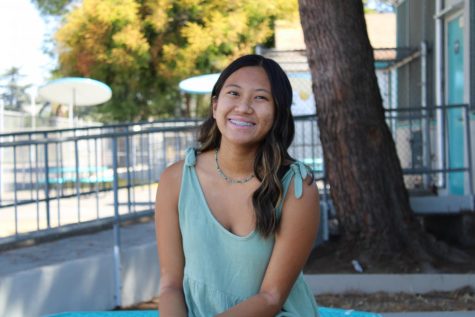Students adjust to semester-long distance learning
May 21, 2020

This week marked two months since students began distance learning and students are still adapting to this new lifestyle of the stay-at-home mandate and sudden change to remote learning.
“Managing classes remotely is still something that I have to get used to,” sophomore Chareena Pascua said. “I think that it’s still good to meet with your teachers just to have that feel of face to face communication.”
On March 13, students were sent home with two weeks worth of packets, which quickly turned into distance learning for the remainder of the semester. This new remote learning method has caused mixed reactions from students who have found that they need a more structured learning environment. In an attempt to alleviate stress for students, the Los Angeles Unified School District has decided that students can’t receive a failing grade this semester and can only work to improve their grades as of March 13.
Currently, the school is waiting for directions from the Central Office as to how this upcoming fall semester will unravel. Since the beginning of the school year, Daniel Pearl Magnet High school (DPMHS) has distributed over 150 Chromebooks and over 30 hotspots to students who didn’t have a device of their own. DPMHS has also shared with families the various ways they can attain wifi at no charge.
“Regardless of how instruction is going to be delivered…we want to ensure that everything is in place,” Principal Pia Damonte said.
The 2020-2021 school year will begin on Aug. 18 but it is still uncertain whether or not campuses will reopen or if distance learning will continue in the fall. Community colleges, the University of California school system, and the Cal State University systems have decided that they will carry on with online learning for their fall semester.
“The timing remains uncertain because the science is still uncertain,” Superintendent Austin Beutner said in an L.A Times article. “At a minimum, a comprehensive system of testing and contact tracing will need to be in place and the implications of the testing widely understood before schools can reopen.”
Among the change in remote learning, teachers themselves are also learning to adapt to this new way of educating their students. Teachers had to do a 10-hour professional development on distance learning in order to prepare for this new arrangement.
Within the first weeks of remote learning, math teacher Lori Seo made the decision to switch all her classes to Edgenuity, an online class platform. To help guide her students, she created discussion boards on Schoology to answer any questions her students might have.
“I had tutoring through Zoom for students to come in with questions,” Seo said. “I am adjusting to online teaching by making most of the time I have with my students through Zoom.”
Given the circumstances, all teachers are putting in much effort to keep their students engaged with the classwork. Yet some students aren’t as diligent as others which makes it difficult to ensure that they understand the material.
Teachers can’t stress the importance of participation in not only Zoom calls but class assignments as well. Some educators, like English teacher Ronald Baer, are still trying to find balance in covering the same content as they would in class.
“A lot of time is just spent in just ensuring that students are understanding how to work online, how to schedule their time and clarifying assignments,” Baer said. “I feel like every day I need to continue trying to find adjustments so students can best learn.”
Most students do comprehend the importance of staying connected with their peers and instructors. There is a clear distinction between reading assignments and having them be explained to you, whether it be in person or via Zoom. That is one of the biggest motivations students have in taking part in Zoom calls.
Teachers meet with the rest of the school staff on a weekly basis to discuss those who don’t participate in these Zoom sessions. From there, either counselors or staff reach out to parents to discuss their child’s attendance.
In regards to work overload, some students seem to be managing their work wisely. For example, freshman Kennedy Guzman organizes her assignments based on upcoming due dates and is determined to stay on track in order to keep her grades up.
“Still knowing my grade won’t drop, my motivation to do my work is that eventually, we will have to do state testing,” Guzman said. “If I just give up on all my work in my classes now, whatever I was supposed to be learning will most definitely be in the tests that the state gives.”
Some students seem to be handling this situation differently, others find this new way of learning adjustable but not preferred.
“I feel like the assignments are easier than they normally would,” junior August Defore said. “I don’t think I learn as much as I normally would sitting in a classroom and it may be easy but I haven’t learned a lot.”












